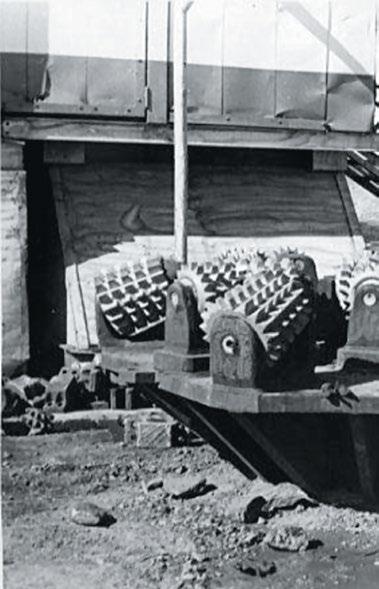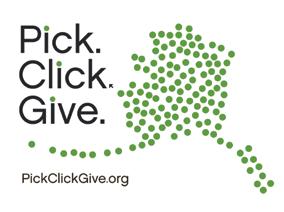
7 minute read
GRANT REPORT
future
can
Advertisement
we choose?”
Hiroshima-Amchitka project offers perspectives on a world gone nuclear By Debra McKinney
here are more pleasant things to ponder on a sunny September afternoon. Still, about 150 people showed up for Hiroshima-Amchitka Legacies: What Future Can We Choose?, a presentation and panel discussion held at the Anchorage Museum auditorium.
With the help of a $3,700 Alaska Humanities Forum mini-grant, the Hiroshima-Amchitka project brought scholars, scientists, historians, activists, and others together to talk about the human and environmental impacts of the bombing of Hiroshima in 1945; and the testing of nuclear bombs on Alaska soil, on the Aleutian island of Amchitka, between 1965 and 1971. The last of three detonations, the largest underground test in U.S. history, was 385 times stronger than the bomb dropped on Hiroshima, and came more than three decades after the United Nations first called for elimination of all nuclear weapons.
Among the speakers was Kathleen Sullivan of the International Campaign to Abolish Nuclear Weapons (ICAN), the coalition that won the 2017 Nobel Peace Prize. Anchorage Mayor Ethan Berkowitz opened the program by declaring Anchorage an ICAN city and signing the ICAN Cities Appeal:
Anchorage is deeply concerned about the grave threat that nuclear weapons pose to communities throughout the world. We firmly believe that our residents have the right to live in a world free from that threat. Any use of nuclear weapons, whether deliberate or accidental, would have catastrophic, far-reaching and long-lasting consequences for people and the environment. Therefore, we support the Treaty on the Prohibition of Nuclear Weapons and call on the United States government to join in.
Project leader Hiroko Harada, Ph.D., is a professor of Japanese at the University of Alaska Anchorage (UAA) and director of the Montgomery Dickson Center for Japanese Language and Culture. The center was named in honor of her former student, Montgomery “Monty” Dickson, who perished in Japan in 2011 when a magnitude-9 earthquake unleashed a massive tsunami, devastating Rikuzentakata, the city where he was teaching English.
Harada, who earned a doctorate in Comparative Literature from the University of Illinois at Urbana-Champaign, wrote her thesis on “As pects of Post-War German and Japanese Drama: Reflections of War, Guilt and Responsibility” (Edwin Mellen Pr. 2000). It included a chapter, “Dooms Day,” on nuclear holocaust. She first went to Hiroshima in 2015 with a group of stu dents after visiting Rikuzentakata, where Dickson died at 26, to learn about the devastation caused by manmade and natural disasters and the enormous reconstruction efforts. The fol lowing year, she again visited Hiroshima, where she met atomic bomb survivors, a “powerful” experience, she said.
“The message of those survivors who experienced the holocaust is clear: Do not repeat! Why do people not listen to them? Why do people forget? Why do they not learn? Forget about politics, money, and greed. Really, what future can we choose?”
Harada, along with event co-organizers Carole Anderson and Hana Willcoxson, designed the Hiroshima-Amchitka project to address these and other questions.
The Amchitka legacy
Aleuts inhabited Amchitka for thousands of years, but a century after the first Russian fur traders arrived in the region, there was no one left. The island became a wildlife refuge in 1913, and since 1980, has been part of the Alas ka Maritime National Wildlife Refuge. During World War II, when Japanese forces bombed Dutch Harbor and invaded the Aleutian islands of Attu and Kiska, the U.S. military moved in.
The third and largest nuclear test on the Aleutian island of Amchitka inspired the founding of Greenpeace.
Two decades later, the island was chosen as a nuclear test site, sparking national and international protests. The third and largest test, the Cannikin, inspired the founding of Greenpeace. In addition to radioactive contamination, there were fears that detonating a 5-megaton nuclear warhead a mile beneath the surface in a seismically unstable area would trigger an earthquake and tsunami.
Pamela Miller, founder and executive director of Alaska Community Action on Toxics, told the Hiroshima-Amchitka audience of efforts to stop the program and how concerns were ignored, including those of Aleut residents of the Aleutian and Pribilof islands, the most knowledgeable of the region. In addition to human rights and environmental groups, those opposed to the program included the Alaska State Medical Association, which stated that the nuclear blast could “only result in injury and death to present and future generations.” President Richard Nixon, by executive order, suppressed comments from five federal agencies opposing the tests. A legal challenge in the U.S. Supreme Court failed 4-to-3. By then, Nixon had already ordered the Cannikin to proceed.
According to various accounts, the blast blew the ground 20 feet in the air and created massive coastal rockfalls and turf slides that destroyed intertidal marine life. The blast rearranged the island, killed countless fish, birds, and, according to the Alaska Department of Fish and Game, 700–2,000 sea otters. Two days later, the surface above the blast zone collapsed, leaving a crater a mile wide and 40 feet deep that’s since filled with surface runoff and rainwater.
The island is now tested for radioactive leakage every five years, funded by the Department of Energy (DOE). According to the DOE, analysis of the most recent samples collected in 2016 found no leakage, and samples collected in 2011 showed no “excessive risk.”
Miller, an environmental scientist, is skeptical. On a Greenpeace mission in 1996, she and others found evidence of plutonium-23/240 and americium-241 leaking into White Alice Creek, which flows into the Bering Sea.
From the first bomb test in 1965 through the late 1980s, more than 3,000 people worked on Amchitka, doing everything from construction to surface cleanup to cooking and maintenance. Jim Cannon, a public information officer from the U.S. Atomic Energy Commission's Nevada headquarters, stands beside a 10-foot diameter drill bit. The tool was used to drill a 6,000- foot deep hole on Amchitka in Sept., 1969, in preparation for the 1971 “Cannikin” nuclear test.
PHOTO BY LYMAN WOODMAN, UAA-HMC-0353-B8-F17-24

A 2005 data analysis by UAA’s Dr. Mary Ellen Gordian found radiation-related cancers significantly higher among those workers than the general population. Persistence for justice, including Miller’s work and a class action lawsuit, put an end to government stonewalling in the 1990s, and hundreds of Amchitka workers have since received compensation.
Karen Pletnikoff, an environmental scientist with the Aleutian Pribilof Islands Association (APIA), provided an Aleut perspective during the Hiroshima-Amchitka Legacies: What Future Can We Choose? seminar, not only regarding Amchitka, but also of the Fukushima Daiichi Nuclear Power Plant disaster, since radioactive materials from Fukushima have shown up in the Bering Sea. State epidemiologists say those levels are thousands of times too low to pose health risks. That’s not particularly comforting for many whose lives and livelihoods are intermingled with the sea.
“We are naturally extra concerned about contaminates in traditional foods where there should be zero,” Pletnikoff said. “There’s no acceptable amount. These are foods with incredible cultural, social, and personal-autonomy importance. We feed them to our children and our elders, those of our society that we most value. “It’s really important to note that Amchitka can’t be solved. It needs monitoring in perpetuity.”
Marine scientist Bruce Wright, another Hiroshima-Amchitka speaker, has done sampling out there, including on Cannikin Lake above the blast zone and in the Bering Sea.
“We were out there a year and half after Fukushima,” he said in an interview. “In the samples we collected we could see plutonium from Fukushima—super low levels. I mean, you get more radiation flying between Anchorage and Homer. But what I found so fascinating was that we didn’t detect anything looking like
The Alaska Humanities Forum: A Good Pick

Pick.Click.Give. allows Alaskans to easily share part or all of their Permanent Fund Dividend with nonprofit organizations they care about. The 2020 PFD application period runs through March 31. When you apply, please consider making a gift to the Alaska Humanities Forum.
The blast rearranged the island, killed countless fish, birds, and, according to the Alaska Department of Fish and Game, 700–2,000 sea otters.
it came from Amchitka. Seeing the Fukushima plutonium signal, to me, validated our control. We’ve got some pretty good lab science going on. It seems like nothing’s leaking right now.” That could change, he noted. The deepest part of the sea adjacent to the island is less than 1,000 feet. The Cannikin warhead was detonated some 4,000 feet below that.
“Amchitka’s on the edge of the Ring of Fire, where the Pacific Plate is overriding the North American Plate,” Wright said. “So, you know it’s going to fracture.”
Underground nuclear blasts create a cavity, he explained. DOE’s position is that, with all the melting, the cavity is coated in glass and sealed off.
He doesn’t buy it. “In the case of Cannikin, it did form a cavity, but I don’t think it’s sealed off. I think it’s just a big mess down there, and I hope it stays down there.” ■
Debra McKinney, a long-time Alaskan journalist, is author of Beyond the Bear and a frequent contributor to FORUM magazine.












